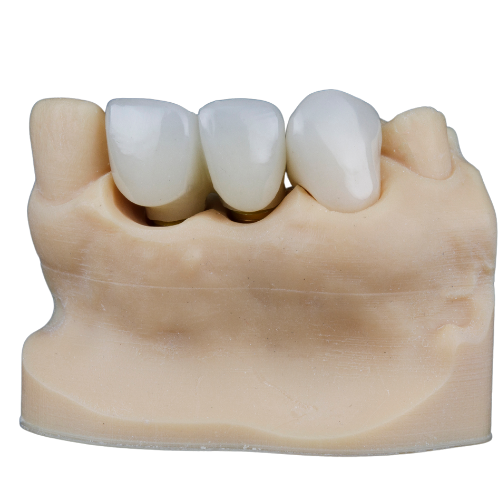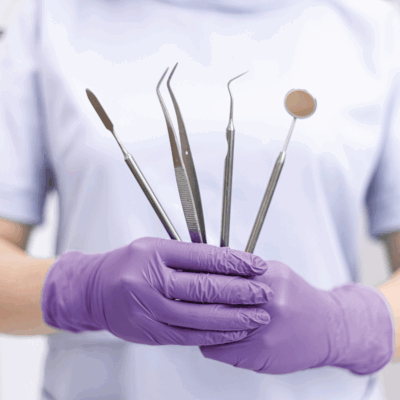WHAT THEY ARE AND HOW THEY WORK


Initial Evaluation & Treatment Planning
-
The dentist performs a full exam, including X-rays and impressions.
-
They assess adjacent teeth (abutments) for strength and health.
-
Treatment options are discussed, and a bridge is confirmed as the best solution.

Preparation & Temporary Bridge
-
The abutment teeth are reshaped by removing a portion of enamel.
-
Impressions are taken to create a model for the custom bridge.
-
A temporary bridge is placed to protect exposed teeth and gums.

Fabrication of the Bridge
-
A dental lab fabricates the bridge from the impressions using porcelain, metal, or zirconia.
-
This process takes 1–2 weeks.
-
The bridge is designed to match the color and shape of your natural teeth.

Final Placement & Adjustment
-
The temporary bridge is removed, and the permanent bridge is fitted.
-
Adjustments ensure proper bite, comfort, and appearance.
-
Once perfect, the bridge is cemented in place and oral care instructions are provided.
What to expect during treatment
During dental bridge treatment, you can expect a two-visit process. At your first visit, the dentist will examine your mouth, shape the surrounding teeth, and take detailed impressions. You’ll be fitted with a temporary bridge while your permanent one is crafted in a lab. During this time, you might feel slight sensitivity or discomfort, but it’s typically manageable. At the second visit, your custom bridge is precisely adjusted and permanently placed. You’ll receive instructions on how to care for your new bridge, which will look and feel like your natural teeth, restoring both function and appearance to your smile.
How to Care for Your Dental Bridge
Caring for your dental bridge is essential for longevity and oral health. Brush twice daily with a soft-bristle toothbrush and non-abrasive toothpaste to prevent plaque buildup. Use a floss threader or water flosser to clean under the bridge and between supporting teeth. Avoid chewing hard foods, ice, or sticky candy that could loosen or damage the bridge. Visit your dentist regularly for cleanings and checkups to ensure your bridge remains secure and your surrounding teeth stay healthy. Maintaining good oral hygiene and a balanced diet will help your dental bridge last for many years without complications.

